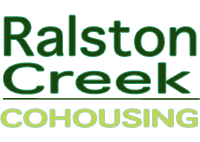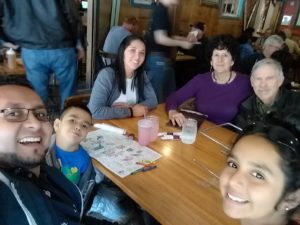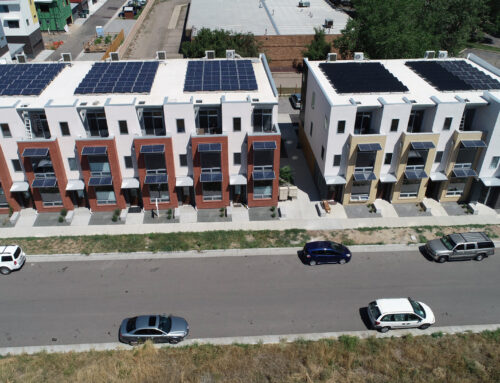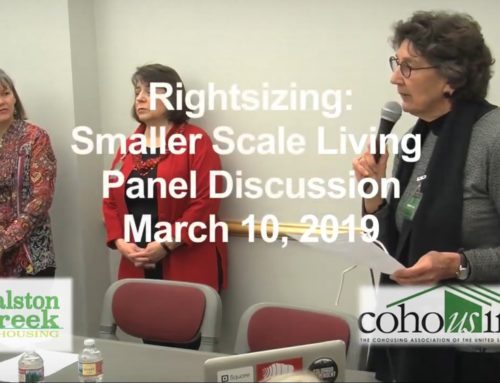On the road to a future in cohousing, I have been on a dizzying journey: just this month, I moved to an in-town condo, and in so doing I have literally shed over half of my square footage and three-quarters of my family’s accumulated material. Not that downsizing is so unusual: cross-country job hunters, house-poor retirees, the newly divorced, medical crisis survivors, and seniors face these kind of downsizing projects in great numbers, so often under duress. What may make me unusual is having embraced this pain before it was necessary. The upside? It feels better to go through the ordeal with some sense of personal choice, purpose, and control.
Why is downsizing so brutally hard? There’s the immense physical drain of the effort. But, if it lacks empowering framing, downsizing also can have crushing emotional and spiritual heaviness. Unless downsizing is the door to your vital future, it will be experienced as an agonizing series of losses. (That was the kids’ favorite TV chair. That huge Christmas tree was my dream.) This is why we should be compassionate with our elders who fight relocation with what looks like irrational ferocity. “But I need you to be safe” rings hollow if it seems to come at the cost of everything she knows, relies on, and treasures, her comforts and very identity. The only way to reach peace is for her to see a vital future, something worth the change.
How I found my vital future, I realize now, was to define it in terms of cohousing, of moving into intentional, supportive community. I came to see that all-eggs-in-one-basket dependence on the nuclear family for emotional well-being perhaps works for some folks at some times, but it seems a poor strategy for the post-empty-nest phase of life, where households shrink and change and employment wanes. Space opens up in this phase of life, but our old suburban environment (which has ample busywork in the form of constant upkeep) lacks an organic means to infuse daily life with revitalizing and nurturing activity. Like a butterfly, we need to dissolve and rebuild ourselves to master what’s next. Downsizing is our chrysalis.
Cohousing — short-hand for living in intentional community and sharing common spaces — has, at its core, the secret to downsizing: placing people ahead of things.
Things. During the nesting and chick-raising years, we become intensely thing-focused: rooms for kids; yards for pets; cars for errands; patio for parties; storage for decorations; upgrades for property value. Tremendous focus, time, and treasure goes into crafting our living space and all of its comforts and entertainments, all toward an imagined future in which we’ll slow down enough to actually enjoy them. What we miss in that is the understanding that it comes down to Enjoy them with who, right now? Waiting around for grown children to visit relegates the bulk of life to gray in-between time, for many of us. And home improvement and maintenance, which we once met with ambition, now is left a tiring ritual detached from its prior urgency. Many punctuate these days with travel, but that can be largely a mechanism to flee the gray and fill the time. This heaviness is not a sign of a problem but of it being time to change.
People. Cohousing is designed to encourage deepening of the community that calls it home. Like a retreat center, most cohousing prioritizes a central common space for people, to serve the needs of the group: a commercial kitchen, expansive dining/meeting room large enough for all, shared laundry and workshop/toolshed, yoga/exercise facility, guest rooms/suites, living/library room, art/craft space, community garden, car-sharing, and shared greens/playgrounds. The design encourages members to naturally spend ample time together in the community space and shared meals, so that private apartments can be smaller and simpler. Higher density is not only more cost-effective, but it facilitates easy interaction and connection, which is the heart of our vital future.
In the end, all of the things we worked so hard to buy were ultimately to be about enjoying ourselves with others we care for. When we firmly put people ahead of things (as I remember Suze Orman teaching in her financial training), we begin to correct our course. We see how our choices have become constrained by the needs of our stuff (cue George Carlin here), which is really backwards. We see how chasing security made us put our trust in things and neglect interdependence and community.
The problem is not finding practical help with downsizing strategy (you’ve doubtless heard of the delightful Marie Kondo and the book The Gentle Art of Swedish Death Cleaning, for example); the problem, I think, is deeper: how to want to downsize. That’s where the vital future comes in: when we see living differently, living in community, as the longing of our future self, we can understand excessive things as being the barrier to that journey. We want to release whatever doesn’t support us getting to that new home, which won’t have space to house the museum of everything we’ve used and loved. Like the monkey who is stuck with an arm in the vase because he refuses to let go of any of the things he’s grasping in his paw, we have to see that letting go of objects is the very means by which we can break free and get to a better place.
And it is a better place. My new condo community has lots of retirees and single women like me, and every dog walk or trip to the mail can be an hour of happy greeting and getting acquainted. Just by eating my sandwich in the courtyard by the pool, I am easily approached by neighbors hoping to meet me or share some advice. There is comfort and belonging in this condo of a 100 households, where I already know more people than I ever did in the suburbs; how much richer and deeper will it be when there are only 20, and we share so much more?

Growth is not for the faint of heart.








